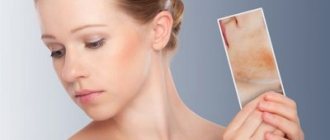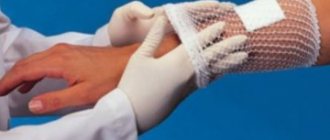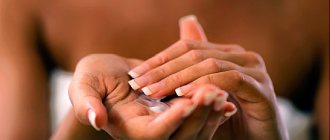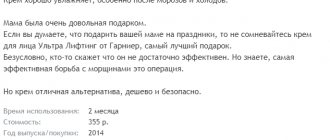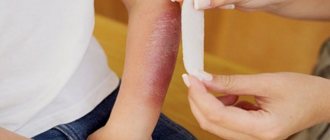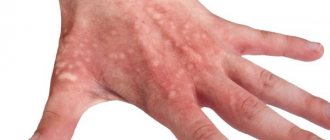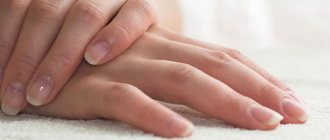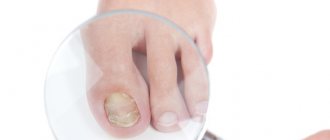Types of burns
Modern medical practice identifies several basic types of burns, differing in their own specific course, general principles of first aid, emergency drug therapy and subsequent rehabilitation. The following burn injuries are distinguished:
- Thermal. Violation of the integrity of the skin due to contact with various heat sources, regardless of the state of aggregation. The source can be an open flame, hot liquids, hot objects, and so on.
- Sunny. Some experts classify them as a type of thermal burn. Such damage is caused by excess UV irradiation of the epidermis with the subsequent development of specific symptoms;
- Electrical. Damage to the skin and deep tissues due to direct contact with high current and voltage. This pathology is characterized by a deep degree of penetration, a high probability of damage to internal organs even with small areas of skin burns;
- Chemical. They are caused by contact with a variety of chemicals that can disrupt the integrity of the skin.
Classification of third degree burns
In general, 3rd degree burns are divided into two more groups - type A; type B.
In the first case (type A), the skin completely burns, but the germ layer remains intact. Such burns are called superficial, even though the area of the affected areas on the body is above 60%.
Treatment of such injuries is carried out in a standard inpatient hospital, with the help of medications. In especially severe cases, surgical intervention is necessary.
The second case (type B) is more dangerous to human health and life. The dermis is completely destroyed, as well as subcutaneous fat tissue. The depth of the lesion sometimes reaches muscle tissue, although it causes minor damage to it.
This type is characterized by the fact that after contact with the lesion (fire, chemicals), scabs remain on the skin - areas with dead skin.
Treatment takes place in specialized clinics, with the help of direct medical intervention and certain medications.
Severity of burn injuries
In general, burns are classified according to severity:
- 1st degree. External epidermal type of damage with the development of interstitial edema and hyperemia of the skin. The burn heals on its own within 1 week without consequences;
- 2nd degree. Superficial dermal damage. Layers of the epidermis can peel off to expose the dermis, blisters with transparent contents and a thin fragmented necrotic scab form. With timely and proper treatment, burns heal without consequences for the skin in 2-3 weeks;
- 3rd Degree . Deep dermal damage. Tissues are affected up to the superficial fascia and deep layers of the epithelium. Multiple detachments of the epidermis are observed; blisters of considerable size with serous and bloody contents form, merging into three-dimensional formations. Powerful swelling increases and a dense gray scab forms. Even with adequate treatment, prerequisites are created for the appearance of contractures, scars and other pathological formations on the restored skin;
- 4th degree. Large-scale damage to all soft tissues with their exposure. Secondary severe changes are formed, vascular thrombosis progresses, internal organs are damaged, and massive necrosis of skin structures is observed. With significant areas of 4th degree burns, there is a threat to the patient’s life; he himself needs emergency medical care.
Providing first aid to the victim
As part of the provision of first-aid care, it is imperative to assess the current condition of the victim’s skin, the extent of their damage, as well as the type of pathological agent affecting the epidermis. If a person has burned more than 1% of their body area, then, regardless of the severity of the pathological process and type, it is necessary to call an ambulance to the scene.
Basic steps to provide first aid to a victim:
- Removing clothes. It is necessary to carefully remove clothing from the burn site and nearby areas. Cut the material in several places and then carefully remove it. If a person’s skin is damaged due to the action of chemicals, then it is advisable to use rubber gloves as a protective measure, and also ensure that remnants of the pathological agent from clothing do not get on the epidermis of the victim and the person providing assistance;
- Washing the skin. The affected area of the epidermis is kept under cool running water for 20 minutes. For a chemical type of burn with acids, a two percent soda solution is used instead of water. If the damage is caused by alkali - 1-2 percent solution of citric acid in the form of applications;
- Bandage. A non-pressure dry bandage made from a sterile bandage or medical wipes is applied to the injury site.
How does a burn heal, how long does it take to recover, stages of healing
After receiving a thermal injury, many people wonder how quickly and how the burn heals. The time it takes to completely restore the skin varies individually.
It depends on factors such as age, degree and area of damage, the nature of the traumatic agent, and the health status of the victim.
Thermal injuries are the most difficult to treat and lead to irreversible complications in children, elderly and debilitated patients. A child can die even with a small area of damage.
The burn heals in several stages . Their sequence is determined by the degree of thermal injury, the presence of purulent complications in the wound, and the nature of the traumatic agent.
Types of burns
The speed and sequence of recovery stages depends on the type of traumatic impact.
Depending on this, burns are divided into the following types:
- thermal,
- chemical,
- radial,
- electric.
Sun and thermal burns from exposure to boiling water, usually superficial, heal quite quickly. Chemical injuries often occur as a result of contact with poisons from animals (jellyfish), plants (hogweed, nettle), and household products. With short-term exposure they are superficial, recovery occurs quickly.
Healing of thermal burns from hot objects (heated iron, radiator, heater) will depend on the duration of contact and the area of damage. Short-term exposure does not cause serious consequences, and the burn goes away fairly quickly. Prolonged contact may result in fourth degree thermal injury.
The most dangerous injuries are from exposure to open flames. Most often these are 3B and 4 degree burns.
Without the help of qualified specialists, recovery will not occur on your own. Healing occurs after surgical treatment.
Effect of burn area
The area of the lesion plays a significant role in wound healing. The larger the wound surface, the higher the risk of developing burn disease . With it, in addition to local manifestations on the skin, there is a lack of organ function and disruption of the heart. Recovery is longer, more difficult, and in some cases the injury is fatal.
The affected area is measured in several ways. One method is to use the palm of the victim himself. In adults, one palm corresponds to 1% of the body area. Special tables are used for children, which are also suitable for adults depending on age.
How does healing occur?
First degree burns heal fairly quickly. It may take 1 to 3 days. Redness and swelling subside. Peeling and pigmentation appear at the site of the burn wound, which after a while disappears on its own without a trace .
2nd degree burns can heal from 2 to 3 weeks, for small areas and without complications - up to 1 week. Under the bubble, if there is no opening, young pink skin can form on its own. If the blister bursts, an infection may occur, then it will take more time.
With 3A degree burns at the initial stage, a dark-colored scab or blister with hemorrhagic contents often forms on the skin.
After some time (2-4 weeks), the scab peels off and the bubble bursts, exposing the underlying layers of the epidermis. Islands of young skin appear in these areas, which gradually cover the entire wound.
Full recovery may take three weeks to two months.
3B and 4th degree burns do not heal on their own. In the initial stages, a dense black scab appears in the wound area. After its rejection, pink granulations begin to appear on the underlying tissues, if suppuration has not occurred. This healing stage will require a very long period, which can reach several months .
After the appearance of juicy granulations, a person’s own skin can be transplanted. At the next stage, either its engraftment or rejection is possible. In the latter case, repeat surgery will be required. After recovery, rough scars form on the skin, disfiguring scars.
Severe thermal injuries in the joint area are very difficult and take a long time to heal. After all stages of recovery, contractures develop in them, limiting the mobility of the limbs.
When an infection occurs, healing at any stage slows down. Therefore, treatment is carried out in specialized medical institutions with the use of antibacterial drugs.
Source: https://fr-dc.ru/kozhnye-zabolevaniya/travmy-kozhi/kak-vosstanavlivaetsya-kozha-posle-ozhoga
What should not be done for burns?
Prohibited actions for burn injuries are as follows:
- Application of substances that can further damage the skin or aggravate the severity of the burn. These include alcohol and various tinctures, oily substances, creams, sour cream and fermented milk products, urine, and so on. The necessary local medications will be prescribed by a specialized doctor after the results of the burn diagnosis;
- Heating and drying the burn site. Skin damaged by burns can only be cooled with water;
- Piercing bubbles. Volumetric formations with transparent, serous or bloody contents, characteristic of grades 2 and 3 burns, should not be pierced or removed independently, since the risks of secondary bacterial infection significantly increase.
Skin restoration after a burn
What to do if the skin peels off after a burn? The process of restoring skin after a sunburn, boiling water burn, or any other type and severity requires complex procedures, including drug treatment, physical therapy, and surgical intervention as necessary.
The exception is 3rd-4th degree burns, which require long-term treatment in the combustiology department. In general, it is recommended to contact a traumatologist, surgeon, combustiologist or other specialized specialist who will prescribe individual therapy for the patient, even in the presence of mild or moderate pathological damage to the skin.
1 degree of severity
Minor damage to the epidermis goes away on its own within 1-2 weeks. You can speed up skin recovery after a burn using the following medications:
- Panthenol. Products based on dexpanthenol that accelerate the healing of the epidermis. Panthenol is available in the form of ointment, spray and gel. They can be applied after the end of the acute period and entering the rehabilitation stage at least one day after the formation of a 1st degree burn. The standard regimen of use is 3-4 times a day for 5 days;
- Rescuer. A local preparation of secondary action containing beeswax, essential oils of calendula, lavender and rosemary, vitamins, tea tree extract. Used only if there are no direct wounds on the skin. You need to smear the skin restoration product 3-5 times a day for a week;
- Liniment . A product for restoring skin after burns based on aloe extract. Induces restoration of the outer epidermis, compatible with other drugs of this class. Apply up to 4 times a day for 5-6 days.
First aid
It is important to know and be able to provide first aid to a burn victim.
First, it is necessary to eliminate the cause, i.e., stop the impact of the traumatic factor.
Clothing is cut off from the victim, and any that stick to the burn area are left to prevent additional damage to the skin. Additional trauma to the skin provokes loss of blood plasma and also increases the possibility of infection.
But nevertheless, it is necessary to remove metal jewelry, because they continue to have a thermal effect on the fabric.
In case of thermal burns, it is very important to cool the skin as quickly as possible: cover it with ice or snow, place it under running cold water for 15 minutes. For minor burns and rapid application of cold, blisters can be avoided. If there are open blisters or wound surfaces, you must first place a clean cloth or wrap it in film on the affected area, and then place it under running water.
The skin peeled off after a burn, what should I do?
First of all, the injured person needs to be given first aid. Even with the death of the upper epithelium, these measures will be little different.
- Get rid of the irritant, be it a hot object or a chemical element;
- Body temperature over the entire burn area will be increased. It must be reduced with cold running water or an ice compress. To make the latter, wrap ice cubes in a clean, soft cloth. Ice should not be applied directly as this can cause frostbite.
In such episodes, the degree of burns plays a significant role. Normal redness is rarely accompanied by peeling epithelium. If blisters have already formed, deep tissues have been damaged, or they have begun to turn black, you should definitely call a doctor.
What can't you do?
There are many incorrect stereotypes about what to apply to a damaged area if the skin has peeled off after a burn.
- Vegetable oil, any fatty ointments. If you apply them immediately after injury, you will disrupt normal heat exchange with the environment. The wound will not be able to cool down, but will only heat up more;
- Do not use any alcohol-containing solutions or preparations, not only if the burned skin has peeled off, but also in any other case. Alcohol dries fabrics, this will only provoke additional irritation;
- Remember that in those episodes when the skin peels off after a burn, the damaged area will begin to get wet. This is a contraindication to many of our usual medications. By using them on open wounds, you can only aggravate the situation;
- Do not use brilliant green or iodine under any circumstances. This action will cause chemical damage.
- Do not apply bandages with gauze or adhesive plasters, which will then be quite painful to remove from the burned area.
How can you treat a burn at home if the skin has peeled off?
Medicines
Medication assistance should consist of several stages. Firstly, the burned area should be disinfected, and secondly, the process of regeneration of injured tissue should be accelerated.
- If the skin has peeled off after a burn, then carry out antiseptic treatment 3 times a day using a solution of Chlorhexidine, Furacilin, and potassium permanganate.
- Apply wound healing ointment:
- Solcoseryl;
- Panthenol;
- Bepanten;
- Olazol.
- To prevent infection, if the injury is extensive and deep, the area where the skin has peeled off after a burn must be treated with antibacterial drugs:
- Levomekol;
- Tetracycline ointment;
- Streptocide;
- Baneocin.
This group of medications does not have wound-healing properties, so they should be combined with regenerating drugs.
Traditional methods of treatment
There are quite a few folk remedies that can be used to treat a burn at home if the skin has peeled off:
- Potato. It needs to be grated and the juice squeezed out. Moisten a gauze bandage in this liquid and apply to the problem area. Change every 6 hours. Helps relieve inflammation and redness;
- Calendula infusion. To prepare, pour 10 g of dry raw material with 250 ml of boiling water and leave for half an hour. Use the same as the previous product;
- Aloe juice promotes rapid tissue healing, disinfects and anesthetizes the damaged area. To do this, cut the leaf in half and place it on the juicy side.
All folk remedies are permissible for use only as part of complex anti-burn therapy, after consultation with the attending physician.
The question of what to do in case of a burn with boiling water, if the skin has peeled off, is quite relevant, because this usually happens over a large area of damage. In such cases, protective blisters do not form, and the process of infection may begin with the further formation of purulent exudate. For second-degree or greater injuries, consult your doctor to prescribe a combination therapy that is right for you.
A burn is a consequence of exposure of the skin to high temperatures, chemicals or radioactive substances. Sometimes the skin at the burn site is so damaged that it even peels off. Such an injury requires treatment: for serious injuries - in a hospital, for minor ones - at home. But in order to properly treat the injury site and not cause harm, you should know what to apply to the wound if the skin peels off after a burn.
How can you soften your skin?
The method of treatment largely depends on the type of burn injury. To provide effective first aid, it is necessary to clarify how the injury was received.
Oil
Boiling oil can cause varying degrees of damage.
In the second and third degrees, treatment is indicated exclusively in a medical institution, where the doctor will develop an optimal recovery plan.
The home therapy option is only suitable for the first degree. Olazol or Panthenol are used to relieve pain. Healing can take several weeks; thin skin must be softened with Bepanten, Panthenol, Vitaon, La-Cri, etc. A folk recipe showed good results: a compress with juice from aloe leaves.
In the sun
And the sun is dangerous to the skin and can cause serious damage. Sunburn can be treated with special medications that are distributed by any pharmacy.
Panthenol will help effectively relieve pain, prevent inflammation and soften. When exposed to it, cells begin to regenerate faster. After application, a protective healing film is formed, which helps restore health. After treatment, the skin does not peel off, crack, or develop pigmentation.
Do not use lotions containing alcohol, oily or greasy substances!
To relieve fever and pain, Aspirin, Ibuprofen and other drugs are suitable.
Electrical appliances
In case of electric shock, a set of measures is required. An important condition is to bring the patient out of a serious condition.
If an arm, leg or other part is damaged, the patient is given dressings with antiseptics and, if necessary, decompression necrotomy. Patients are treated as for thermal burns - Panthenol, Bepanten and other ointments that help restore lost functions to the dermis. For severe burns, Fusiderm and Fuzimet ointments help speed up the recovery process.
What are the dangers of deep skin burns?
Minor and superficial burns from heat exposure have little potential danger. Typically, the risks are associated not with the injury itself, but with improper care, during which the wound can become infected.
With a large area of damage, the danger is:
- shock – due to loss of plasma, the blood thickens, making it difficult for the kidneys, heart, lungs and other organs to function;
- toxemia – due to the destruction of cells, dangerous toxins enter the blood.
Toxemia does not occur immediately, but only a week after the injury, which causes problems with the timely access of the patient to a doctor.
Complications can be prevented by immediately contacting a surgeon or traumatologist.
Effect of burn area
The area of the lesion plays a significant role in wound healing. The larger the wound surface, the higher the risk of developing burn disease . With it, in addition to local manifestations on the skin, there is a lack of organ function and disruption of the heart. Recovery is longer, more difficult, and in some cases the injury is fatal.
The affected area is measured in several ways. One method is to use the palm of the victim himself. In adults, one palm corresponds to 1% of the body area. Special tables are used for children, which are also suitable for adults depending on age.
What to do if the skin peels off after a burn: first aid
Before starting treatment, you need to make sure that high temperatures or chemicals are no longer negatively affecting the skin. To do this, you need to remove clothing from the damaged part of the body and thoroughly rinse the wound with cold running water. If there is no water, then apply ice or snow.
If the area is very large or the degree of the burn is so severe that the victim cannot provide first aid to himself, you need to call an ambulance, wash the wound and wrap him in a clean cloth.
For minor wounds, you can give yourself first aid yourself.
- After washing the wound, you need to treat it with products that are designed to regenerate the skin. Olazol, Furaplast, and Panthenol, which is available in spray form, are well suited.
- With a severe burn, the skin peels off and a wound appears, which can become infected. Therefore, you need to apply a sterile bandage. Gel wipes should be placed under it to help restore the skin: GelePran, LitA-Tsvet-1. The dressing should be changed depending on the duration of action of the napkin: from 1 to 2.5 days.
- If there are no special preparations at hand, you need to treat the wound with any antiseptic that does not contain ethyl alcohol. Miramistin, a solution of furatsilin or potassium permanganate are suitable.
- In case of pain, you need to take a painkiller, for example, Analgin, Ketanov, Paracetamol.
After proper treatment of the wound, the affected skin begins to gradually recover. If your general health worsens, you should definitely consult a doctor.
Symptoms
The clinical signs of the pathology are similar, but depending on whether the germ layer of the skin is damaged or not, they are divided into 2 types.
3a
Burn 3a is characterized by burning of the entire epidermis with relative preservation of the germ layer. With such an injury, severe and prolonged pain develops. The surface of the burned tissues has a heterogeneous structure, is clearly hyperemic, and multiple merging blisters containing clear liquid are observed along its edges.
Note! It is important to differentiate this stage of pathology from a 2nd degree burn, in which blisters also appear, but the damage is less deep.
3b
Burn 3b is characterized by the destruction of nerve cells at the site of pathological impact and the almost complete absence of pain. The blisters are usually covered with a dry scab, with patches of dead skin hanging from the edges of the wound.
General symptoms
Such a deep burn injury cannot remain without a reaction from the body.
Common manifestations of burn disease include:
- weakness;
- severe fatigue;
- lack of appetite;
- dizziness, headache;
- nausea, vomiting;
- increase in body temperature.
Manifestations of intoxication and dehydration
A dangerous complication of injury is burn shock. It is accompanied first by a sharp increase in blood pressure, and then by a sharp drop to critical levels.
In addition, the consequences of pathology may be associated with:
- formation of deep scars;
- joint stiffness;
- incomplete restoration of body functions;
- bacteremia and sepsis;
- disorders of the central nervous system, respiratory, cardiovascular system, and gastrointestinal tract.
Internal organ failure may occur
What is prohibited to do
When providing first aid immediately after a burn has occurred, it is strictly forbidden to use fatty-based oils and ointments. They create a film on the skin that prevents heat from dissipating, causing thermal damage to worsen and the wound to become deeper.
When treating leather, do not use products containing alcohol. Once a scab appears on the burn, the risk of damage from alcohol is minimal. But given the choice and availability of safe antiseptics without alcohol, it is better to use them at all stages of treatment.
The main rule for treating a wound is not to injure it further. Therefore, patches or cotton wool should not be used. It will be difficult to tear them away from the wound, due to which the damaged tissues will be injured during each dressing.
Restoration of the skin using physiotherapeutic methods
It is advisable to prescribe procedures for recovery after burns at the earliest stages of treatment. The rehabilitation period includes the restoration of blood supply, rapid regeneration with the elimination and prevention of decay in areas where there was necrosis of the dermis. To accelerate the therapeutic effect, the following methods of rehabilitation after burns are used:
- Magnetotherapy. Helps restore affected areas, activates blood supply, stabilizes the general condition of the patient.
- Ultraviolet irradiation. Accelerates skin repair, inhibits inflammation, strengthens the immune system.
- Aeroionotherapy. By treating the affected areas with ionization, it increases the permeability of the skin.
- Photochrome therapy, laser therapy. Both types of treatment help to restore skin areas faster due to irradiation, which enhances the effect.
- Dorsonval. A preventive method for preventing ulcers.
- Phonopharesis, ultrasound, UHF. Helps resolve scars, improves blood circulation, resists inflammation and decay.
- Electrotherapy. Several types of treatment are used (transcranial electroanalgesia, electropheresis), which enhance antibacterial properties, restore blood supply, and promote regeneration of cellular tissues.
Prevention
Burns can be avoided by carefully following safety precautions. It is possible to protect children from thermal and chemical damage if they are not allowed to be near sources of potential danger (household chemicals, stove, stove). Areas where hazardous substances are stored must be closed and chemicals must be placed on the highest shelf or in a locked cabinet.
You should always have medicines at home to provide first aid after a burn: special wipes, alcohol-free antiseptics, aerosols for skin regeneration.
